Are you planning to visit Mongolia? or already living here? Whether you are tourist or newcomer, these are 74 interesting facts you should know about Mongolia.
1. The country the world knows as Mongolia is actually the historic Outer Mongolia; Inner Mongolia is still an autonomous region of China.
2. Mongolia’s capital is Ulaanbaatar, or Ulan Bator, which comes from the Mongolian, which means “Red Hero.” The city is not part of any Mongolian aimag, or province, and its population as of 2015 was over 2 million. The city was founded in 1639 as a movable monastery and changed locations 28 times before it was settled permanently at its present location on the Tuul and Selbe rivers in 1778.
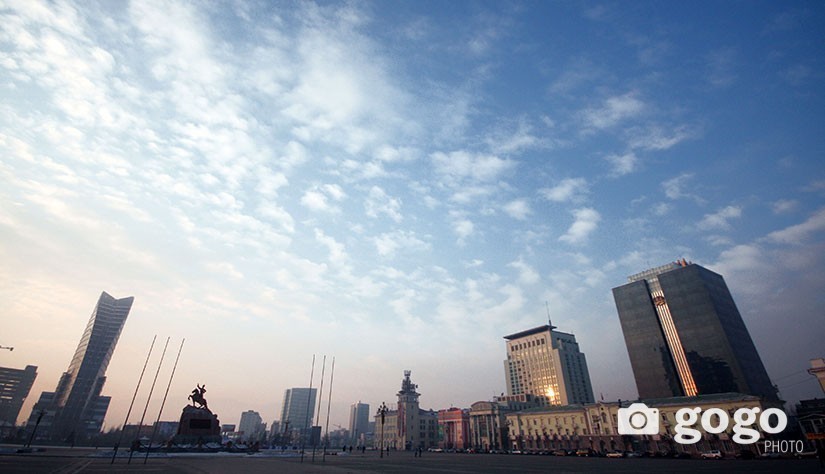
3. Mongolia is the most sparsely populated nation in the world, with only 4.3 people per square mile.
4. Mongolia has a total area of 603, 909 miles2 (1,564,116 km2). It is slightly smaller than Alaska and is the second largest land-locked country after Kazakhstan.
5. There is a theory that Mongolian horseman may have invented ice cream, when they took cream in containers made from animal intestines as provisions on long journeys across the Gobi desert in winter. As they galloped, the cream was vigorously shaken, while the sub-zero temperature caused it to freeze. The expansion of the Mongol Empire spread ice cream through China, from where Marco Polo reputedly brought the idea to Italy when he returned from his travels in 1295.
6. From 1866, the word “Mongoloid,” which literally means “of or like Mongols,” was used as a term for people born with the distinctive features of Down’s syndrome. Today, it is seen only as a racial designation.
7. Before it was named Ulaanbaatar, the Mongolian capital was called Urga, which is the Russian spelling of the Mongolian word örgöö, which is the name for the flap of felt that can be drawn over the smoke hole at the top of a ger or yurt. Used honorifically,Örgöö denotes not only the flap but the whole tent of an important person.
8. On September 17, 2011, 6,002 wrestlers participated in the Mongolian National Wrestling Match. It was the largest wrestling competition in the world, according to the Guinness World Records.
9. The Mongolian Stock Exchange is the smallest in the capitalist world and is housed in a refurbished children’s cinema.
10. In Mongolia, there are 13 times more horses than humans, and sheep outnumber humans 35 to 1.
11. The current president of Mongolia, Tsakhiagiin Elbegdorj, attended both the University of Colorado–Boulder and Harvard University.

12. Genghis Khan was born in A.D. 1162 in Deluun Boldog, near the mountain Burkhan Khaldun, not far from the current capital Ulaanbaatar. Named Temüjin, he emerged at the age of 20 to become the leader of the Borjigin Mongol clan. After 20 years of internal warfare, he united most of the Mongol clans, and in 1206, he was named Genghis Khan, meaning “King of the Oceans” or “Universal King.”
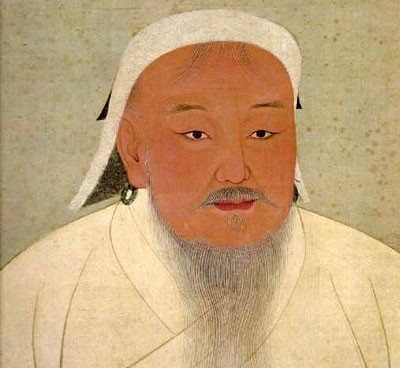
13. After Genghis Khan died in August 1227, his body was returned to Mongolia and buried in an unmarked grave, according to his request. At the time of his death, his empire stretched from Beijing to the Caspian Sea.
14. The two-humped Bactrian camel is native to Mongolia. The annual Thousand Camel Festival has been hosted by a private group working to protect and preserve the Bactrian population in Mongolia, which has been steadily declining over the past 12 years.
15. Mongol khoomii, or throat singing or overtone singing, involves producing two simultaneous tones with the human voice.
16. The Gobi desert, a part of which lies in Mongolia, is the largest desert in Asia and is the fifth largest in the world.
17. It was only in 2002 that Taiwan officially recognized Mongolia as an autonomous country and removed it from maps of China. Mongolia still endorses a “One-China Policy” and officially considers Taiwan to be a part of China.
18. Snow leopards are native to Mongolia, and one-third of the world’s population lives there. A snow leopard cannot roar or purr.
19. Thirty-six percent of the Mongolian population is under age 18.
20. The Great Wall of China was actually built in Inner Mongolia in the 6th century A.D.
21. Mongolian native horses are called takhi, the Mongol word for “spirit,” and have 66 chromosomes, or two more than the average horse. They are the last truly wild horses left on the planet. The Tarpan, a Eurasian subspecies of wild horse found from southern Spain to eastern Russia, died out in the 1920s.
22. Mongolia is referred to as “Land of the Blue Sky” because it has over 260 sunny days a year.
23. Mongolian warlord Genghis Khan was voted one of Time magazine’s “25 Most Important Political Icons of All Time” in 2011.
24. In 1922, American Roy Armstrong Chapman became the first human to unearth dinosaur bones from the Cretaceous period in Mongolia’s Gobi desert. Some say Chapman was the inspiration behind the popular film character Indiana Jones.
25. The name Mongol was first recorded during China’s T’ang Dynasty (A.D. 618–907). The Uyghurs, who now live in the Chinese province of Xinjiang, allied themselves with the T’ang and invaded Mongolia in 744. The Uyghurs controlled most of Mongolia until 840.
26. An astounding number of people in Central Asia are estimated to be the descendants of Genghis Khan. Geneticists have begun to trace a variant of the Y chromosome transmitted only through the male line in the DNA of a huge number of Central Asian males—estimated at 17 million—who appear to share a common progenitor, dating back to the 13th century.
27. John Wayne played Mongolian warlord Genghis Khan in the 1956 Dick Powell-directed film The Conqueror. The movie was a box office flop and is still panned today.
-160503-195462132.jpeg)
28. Harold Lamb’s 1927 book Genghis Khan: Emperor of All Menremains the bestselling biography of the Mongolian warlord.
29. Due to its high elevation, high latitude, landlocked location, and the effects of the Siberian anticyclone, Ulaanbaatar is the coldest national capital in the world, where the average temperature is -1 degree celcius.
30. Mongolia is said to be derived from the word Mongol, which is said to be from the word mong, meaning “brave.”
-165038-617562691.jpeg)
31. Mongolia’s national drink, fermented mare’s milk, is called airag—or kumiss, in other parts of Central Asia.
32. Damdin Sükhbaatar, the “Father of Mongolia’s Revolution” for independence from China and whose name means “Axe Hero,” died at the age of 30. Early reports from his physicians said he died of poisoning, but later official biographies stated that he had died from tuberculosis.
-160702-1517427.jpeg)
-160712-2064461786.jpeg)
33. Many Mongolians still live in a traditional ger, also known as "yurts" which is a type of tent. Also known as “yurts,” these portable dwellings were traditionally used by nomads in the steppes of Central Asia as their homes.
34. In the 1962, William Coperthwaite introduced a modern version of the yurt to the United States, after reading an article in National Geographic magazine with pictures of Mongolian gers.
35. The most popular Mongolian sport is bokh (durability), or wrestling, and the most important tournament is held on Mongolia’s Independence Day. The first-place winner earns the right to call himself arslan (lion), the runner-up to an arslan is a dzan(elephant), and the third-place finisher is a nachin (eagle). Should the arslan win the tournament twice in a row, he will have earned the title avraga (titan) —the apex of Mongol wrestling, roughly equal to Grand Champion rank in Japanese sumo wrestling.
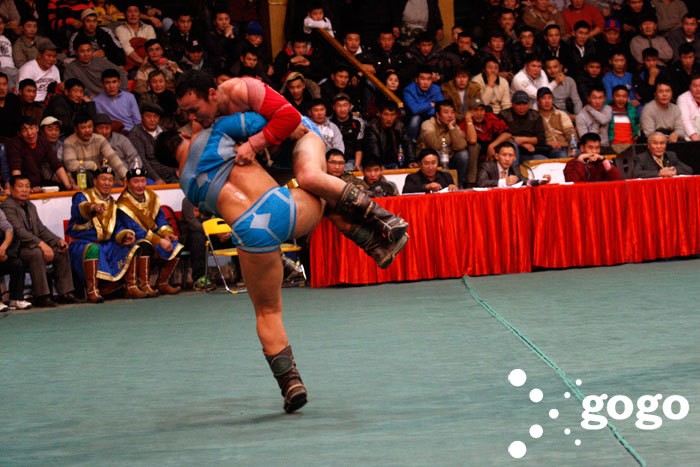
36. In Mongolia, wrestling is a tradition that goes back hundreds of years, perhaps further than recorded history. Chinese who visited Mongolia in the 7th century A.D. reported watching wrestling matches, and the chronicle of the Franciscan friar Carpini, who was in the Mongol capital of Karakoram in the 13th century, also mentions the sport.
37. A grandson of Genghis Khan, Kublai (or Khubilai) Khan, conquered China, ending the Song Dynasty, and became emperor of the Yuan Dynasty. Kublai Khan established his winter capital at Beijing, which was known then as Dadu (Great Capital). His regime left two major monuments in Beijing, which are still standing: Yonghegong (Lama temple) and the giant white stupa (mound-shaped Buddhist structure) in Beihai Park. Kublai Khan also built a summer capital in what is now Inner Mongolia named Xanadu (Shangdu), but there is nothing left of it today.
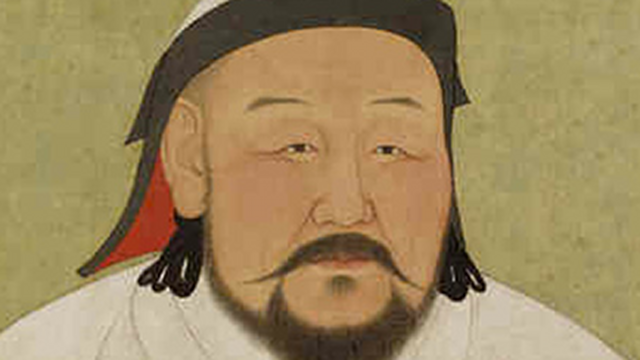
38. On November 26, 1924, the Mongolian People’s Republic became the world’s second Communist country.
39. Mongolia is one of the highest countries in the world with an average elevation of 5,184 feet (1,580 m).
40. Larch is the tallest tree in Mongolia, with the highest one recorded reaching 148 feet (45 m).
41. National University of Mongolia is the first university in Mongolia. Originally named Choibalsan University, it opened in 1942.
-165753-905422152.jpeg)
42. The main religion of Mongolia is Lamaism, or the Yellow sect of Tibetan Buddhism. It originated in Tibet around the 7th century A.D. Mongolian ruler Altan Khan introduced Lamaism to the Mongolian masses in the 16th century and he also first assigned the title of Dalai Lama to Tibet’s religious leader.
43. Mongolian is a member of the Ural-Altaic family of languages, which includes Finnish, Turkish, Kazakh, Uzbek, and Korean among others.
44. Erdene Zuu Monastery, the oldest surviving Buddhist monastery in Mongolia, was built in 1586 in Kharkhorin. Today, it is located adjacent to the ancient city of Karakorum, or Harhorin.
45. Among the European travelers to cross the continents to China was the Venetian explorer Marco Polo (c. 1254–1324) who spent 17 years in China in the court of the Yuan Dynasty. He recorded his experiences in Il Milione (The Million), published in English as The Travels of Marco Polo.
46. Mongolia was admitted into the United Nations in 1961. The United States of America, along with 100 other nations, did not recognize it formally as a country until 1987.
47. Genghis Khan enacted a code known as the Yassa (“order” or “decree”), which enacted religious tolerance, exempted clergy of all faiths from taxation, forbade washing and urinating in running water, and prescribed the death penalty for spying, desertion, theft, and adultery.
48. Although Genghis Khan was illiterate himself, he introduced writing to Mongolia in the early 13th century by borrowing the script of the Uyghurs, who had taken it from the Sogdians (ancient Persians of the Achaemenid Empire). This script, which is written in vertical columns from left to right, is alphabetical but often ambiguous as some letters are indistinguishable from each other. Mongolia briefly adopted the Latin alphabet in the 1930s but then replaced it with the Cyrillic alphabet in 1941, adding two additional letters to represent the ö and ü sounds, not found in Russian.
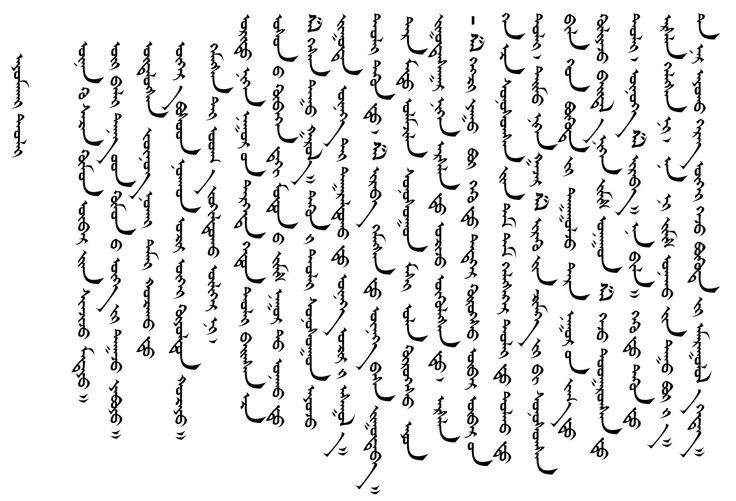

49. The biggest sporting event of the year in Mongolia is the Naadam festival, held during the National Day celebrations each July. The most important events at the festival are called eriin gurvan naadam (“the three games of men”): archery, wrestling, and horse racing.
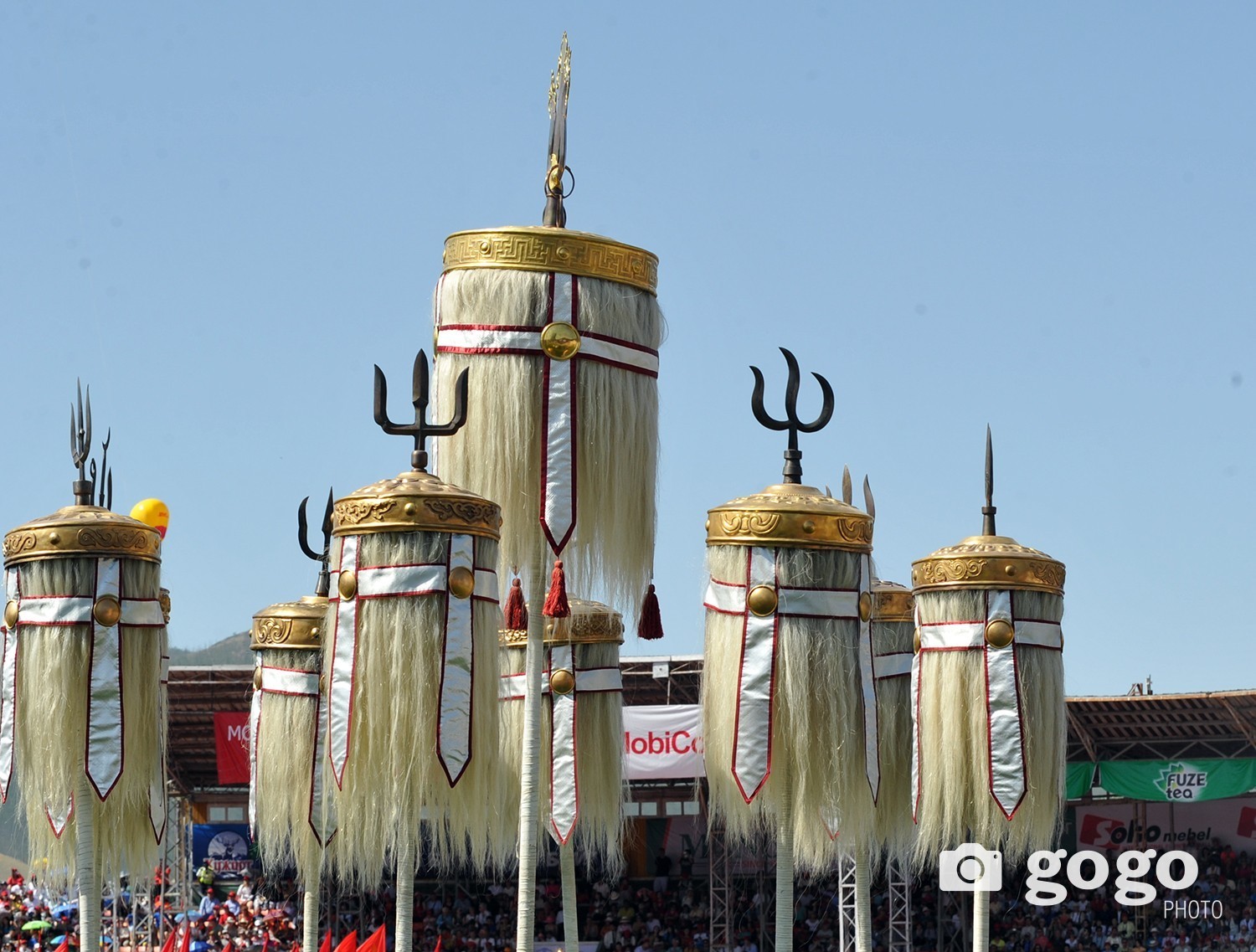
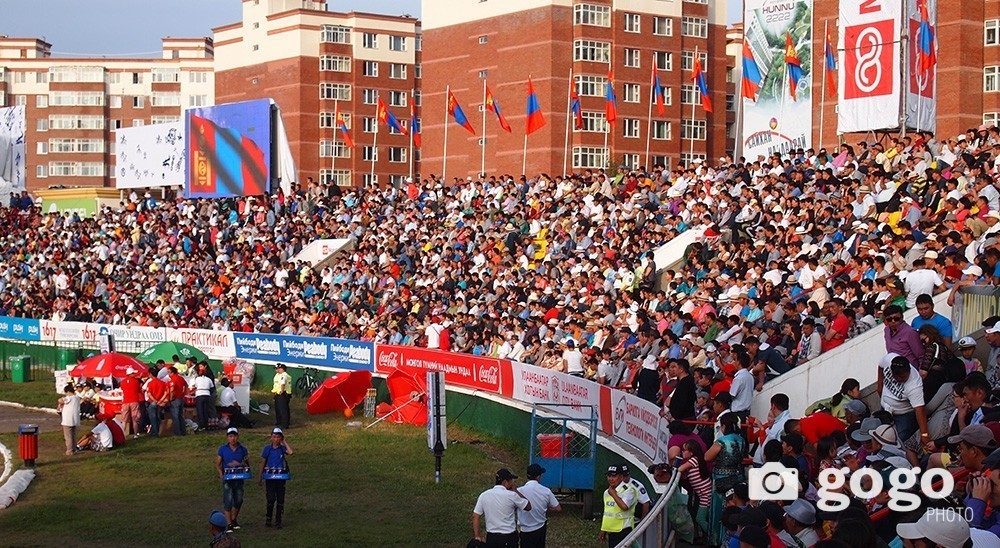
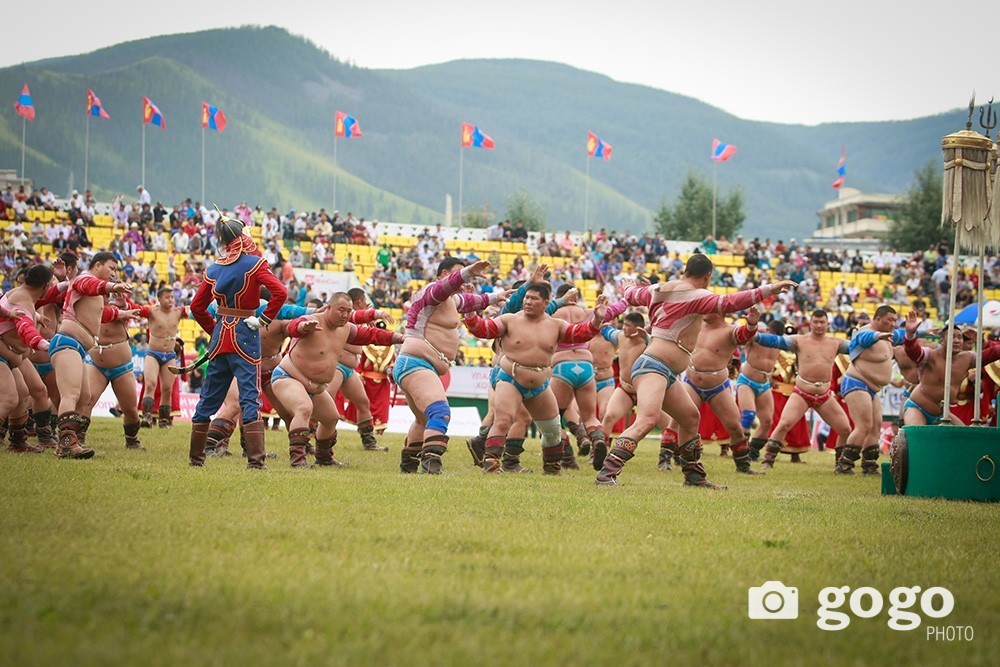
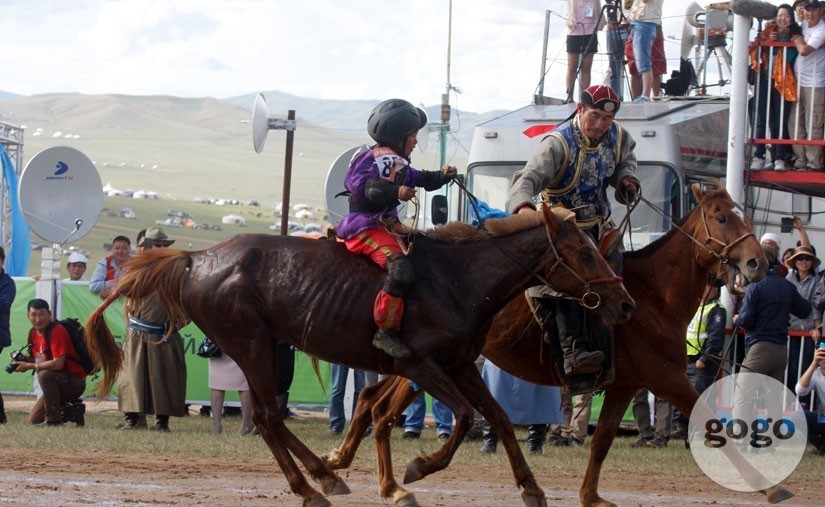
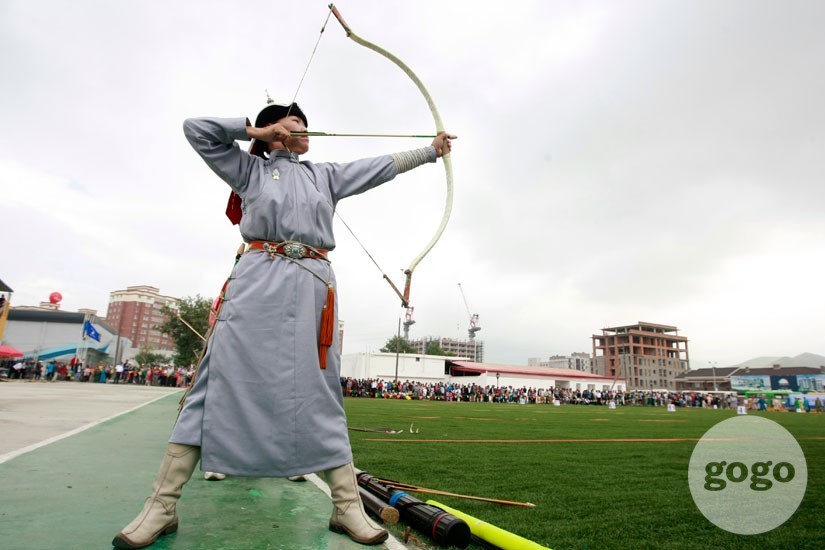
50. Kublai Khan established the first Pony Express-style postal services in Mongolia about 1,000 years ago when correspondence was carried by horse, and urgent messages—to which a feather was attached—were carried hundreds of miles a day on horseback nonstop. The Mongolian horse post became a special state service named örtöö (“checkpoint”), which remained in operation until 1949. The route had fixed relay stations, situated some 18–25 miles (30–40) km apart. One of the many duties of the Mongolian mail courier was to carry out tours of duty with carts and animals at the örtöö, or supply a substitute, and carry mail or travelers to the next station.
51. The first Mongolian postage stamps appeared in August 1924.
52. The Mongolian traditional costume is called the deel, which is similar to a caftan or old European-style folded tunic.
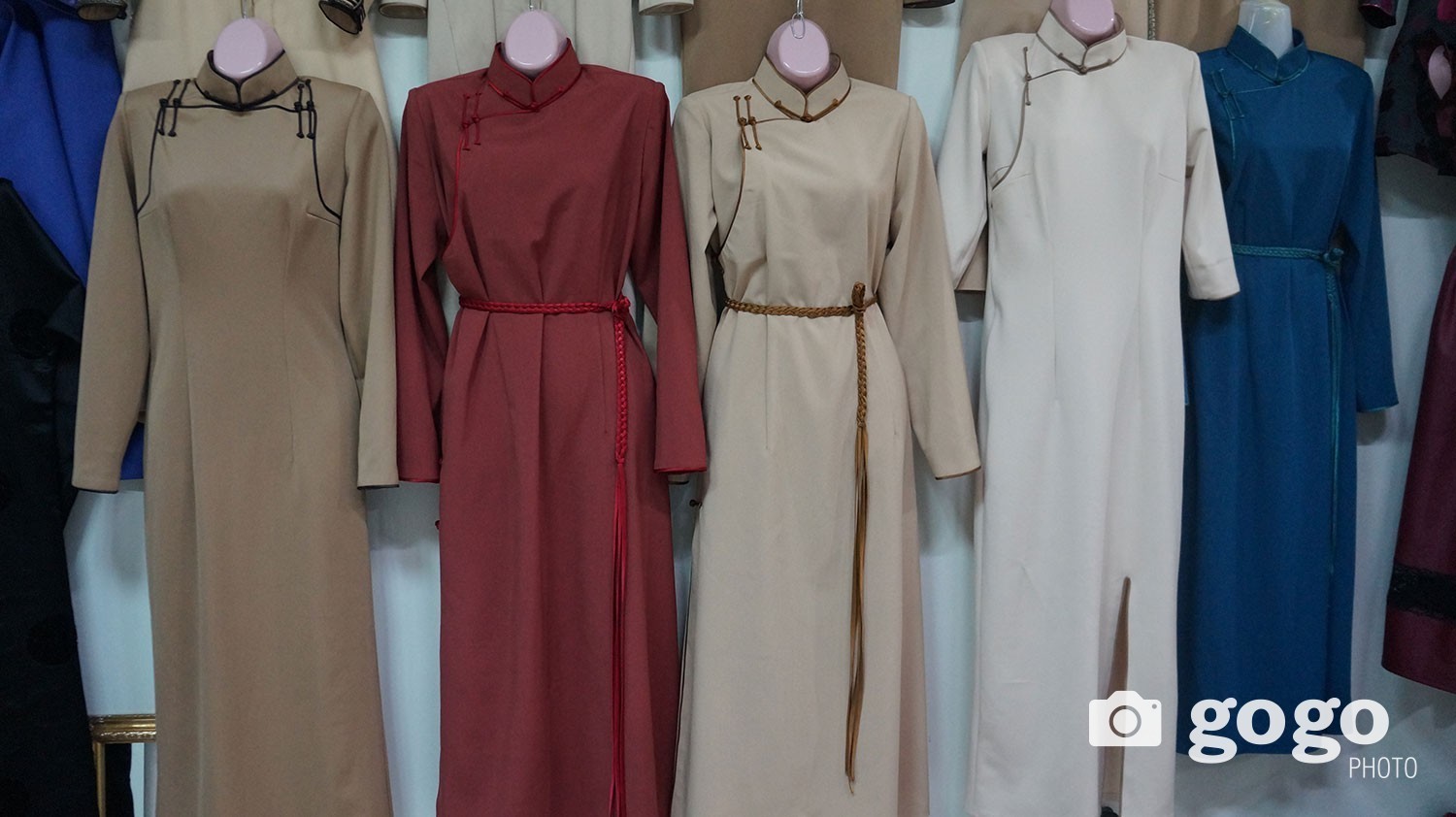
53. Mongolia is the world’s second-largest producer of Cashmere goat’s wool, behind only China, with 20% of the world market.
54. Yaks are large bovids native to Central Asia and the Himalayas. Mongolians make cheese of yak’s milk called Byaslag. Mongolians have crossbred cattle with yaks to produce an infertile male (dzo)and fertile females (dzomo). Mongolia has the second-highest yak population, after China.
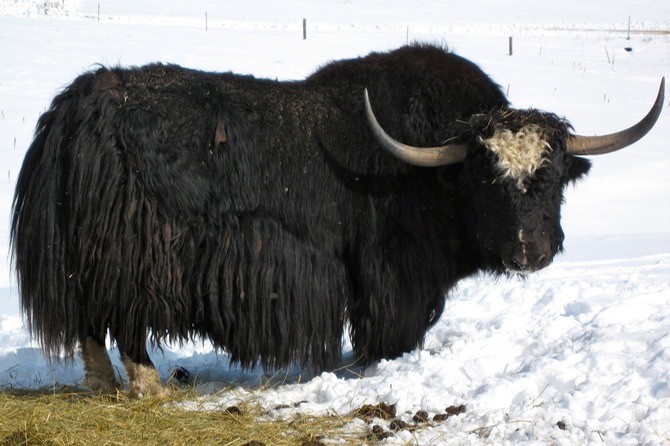
55. On December 21, 2005, George W. Bush became the first sitting U.S. president to visit Mongolia.
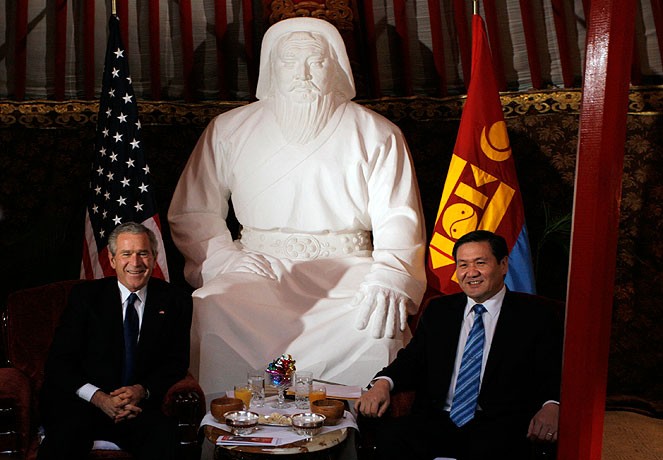
56. Mongolia’s national dish is a steamed dumpling filled with meat (usually beef or mutton) called Buuz.
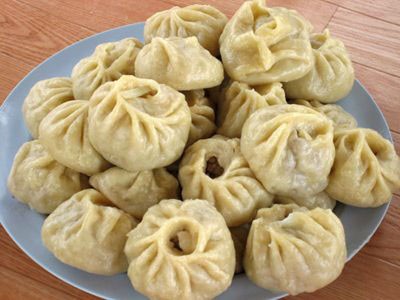
57. The Mongolian Lunar New Year begins in January or February with the new moon Tsagaan Sar (“white moon”).
58. The only substantial Mongolian work existing from the Genghis Khan era is the partly legendary Secret History of the Mongols, which survived only in a version translated into Chinese.
59. In Mongolia, a hadag is a silk scarf, usually white, blue, gold, and orange, presented as a sign of respect to a high-ranking visitor or religious leader or as an offering in a Lamaist temple.
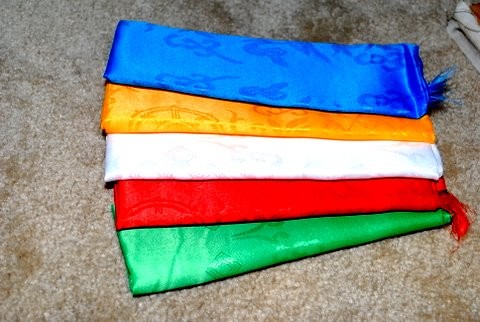
60. Przewalski’s horse, or takhi in Mongolian, was named for Polish geographer/explorer Nikolai Przewalski, who was tasked by the Russian tsar to explore Mongolia in 1818–1819. In 1881, the new species was formally described as Equus przewalskii, after the colonel. After a period of extinction since 1968, in September 2004, 12 takhi hybrid stallions, two yearlings, and seven mares were flown from a reserve in Lozère, France, to Khovd, Mongolia, and then to a 6,000-hectare reserve called Khomiin Tal on the border of Khares-Nuur National Park, in an effort to return the world’s last wild horse to its homeland.

61. Tamga is a traditional Mongolian stamp or seal, originally made of stone or metal in the times of the Mongol Empire. A letter sent by Güyük Khan to Pope Innocent IV in 1246 bears the stamp of the imperial seal in the Mongol script. After the 1921 Revolution, the government designed its own seals on the basis of the Soyombo (the national symbol). The word tamga is also used by Mongolian herders for livestock brands to identify ownership.
62. The Mongols were probably responsible for bringing gunpowder and firearms to Europe, when Genghis Khan organized a unit of Chinese catapult specialists. These men formed part of the first Mongol army to invade Transoxania in 1219. The Chinese had added catapult-thrown gunpowder bombs nearly two centuries earlier to their arsenal.
63. William of Rubruck, a Franciscan friar who traveled to the court of Möngke Khan between 1253 and 1255, published an account of his journey. Although it did not circulate widely in Europe, Roger Bacon, a fellow Franciscan, took a keen interest in Rubruck’s account. Therefore, it may not be a coincidence that the earliest European reference to gunpowder is found in Bacon’s Epistola de Secretis Operibus Artis et Naturae from 1267.
64. The current Mongolian national flag, adopted in 1992, is of three equal vertical bands of red, blue, and red. On the red band near the hoist is the yellow Soyombo, the symbol of the Bogd Khan monarchy which was adopted as the country’s national symbol. The Soyombo symbol on the Mongolian flag was invented by Zanabazar in 1686.
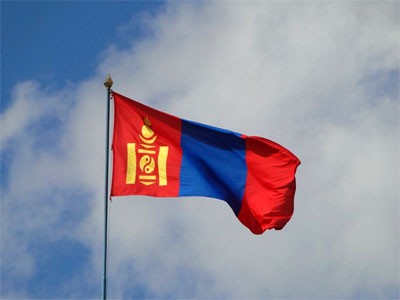
65. In the Persian city of Merv, an ancient center of learning regarded as the Pearl of Asia, Genghis Khan committed one of the greatest nonmechanized mass killings in history, second only to the massacres of Armenians by Turks in 1915. Apart from 400 artisans, Genghis Khan ordered the execution of the entire population. Historians estimate that as many as 1 million Persians were killed.
66. Under Kublai Khan’s Yuan Dynasty Islam spread to Interior China. Marco Polo also records that the province of Yunnan under the Mongols was Muslim and had a Muslim governor, Sayyid al-Ajall. His descendants still number themselves today in China, and the tomb of Sayyid-al Ajall in Yunnan is an important monument of Islamic art in China.
67. Jugderdemidiin Gürragchaa was the first Mongolian to travel into space as a member of the eighth Intercosmos program on March 1, 1978. He spent 7 days, 20 hours, and 42 minutes in space aboard the Salyut 6 space station.

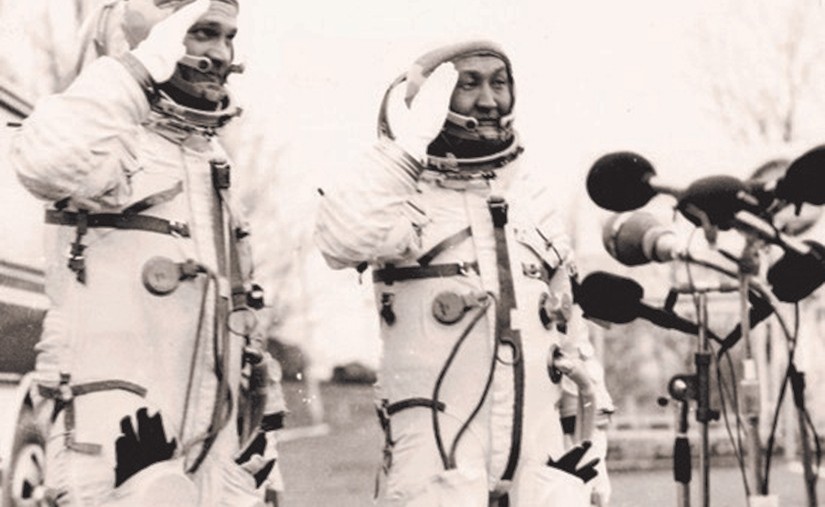
Source: Randomhistory.com
Are you planning to visit Mongolia? or already living here? Whether you are tourist or newcomer, these are 74 interesting facts you should know about Mongolia.
1. The country the world knows as Mongolia is actually the historic Outer Mongolia; Inner Mongolia is still an autonomous region of China.
2. Mongolia’s capital is Ulaanbaatar, or Ulan Bator, which comes from the Mongolian, which means “Red Hero.” The city is not part of any Mongolian aimag, or province, and its population as of 2015 was over 2 million. The city was founded in 1639 as a movable monastery and changed locations 28 times before it was settled permanently at its present location on the Tuul and Selbe rivers in 1778.

3. Mongolia is the most sparsely populated nation in the world, with only 4.3 people per square mile.
4. Mongolia has a total area of 603, 909 miles2 (1,564,116 km2). It is slightly smaller than Alaska and is the second largest land-locked country after Kazakhstan.
5. There is a theory that Mongolian horseman may have invented ice cream, when they took cream in containers made from animal intestines as provisions on long journeys across the Gobi desert in winter. As they galloped, the cream was vigorously shaken, while the sub-zero temperature caused it to freeze. The expansion of the Mongol Empire spread ice cream through China, from where Marco Polo reputedly brought the idea to Italy when he returned from his travels in 1295.
6. From 1866, the word “Mongoloid,” which literally means “of or like Mongols,” was used as a term for people born with the distinctive features of Down’s syndrome. Today, it is seen only as a racial designation.
7. Before it was named Ulaanbaatar, the Mongolian capital was called Urga, which is the Russian spelling of the Mongolian word örgöö, which is the name for the flap of felt that can be drawn over the smoke hole at the top of a ger or yurt. Used honorifically,Örgöö denotes not only the flap but the whole tent of an important person.
8. On September 17, 2011, 6,002 wrestlers participated in the Mongolian National Wrestling Match. It was the largest wrestling competition in the world, according to the Guinness World Records.
9. The Mongolian Stock Exchange is the smallest in the capitalist world and is housed in a refurbished children’s cinema.
10. In Mongolia, there are 13 times more horses than humans, and sheep outnumber humans 35 to 1.
11. The current president of Mongolia, Tsakhiagiin Elbegdorj, attended both the University of Colorado–Boulder and Harvard University.

12. Genghis Khan was born in A.D. 1162 in Deluun Boldog, near the mountain Burkhan Khaldun, not far from the current capital Ulaanbaatar. Named Temüjin, he emerged at the age of 20 to become the leader of the Borjigin Mongol clan. After 20 years of internal warfare, he united most of the Mongol clans, and in 1206, he was named Genghis Khan, meaning “King of the Oceans” or “Universal King.”

13. After Genghis Khan died in August 1227, his body was returned to Mongolia and buried in an unmarked grave, according to his request. At the time of his death, his empire stretched from Beijing to the Caspian Sea.
14. The two-humped Bactrian camel is native to Mongolia. The annual Thousand Camel Festival has been hosted by a private group working to protect and preserve the Bactrian population in Mongolia, which has been steadily declining over the past 12 years.
15. Mongol khoomii, or throat singing or overtone singing, involves producing two simultaneous tones with the human voice.
16. The Gobi desert, a part of which lies in Mongolia, is the largest desert in Asia and is the fifth largest in the world.
17. It was only in 2002 that Taiwan officially recognized Mongolia as an autonomous country and removed it from maps of China. Mongolia still endorses a “One-China Policy” and officially considers Taiwan to be a part of China.
18. Snow leopards are native to Mongolia, and one-third of the world’s population lives there. A snow leopard cannot roar or purr.
19. Thirty-six percent of the Mongolian population is under age 18.
20. The Great Wall of China was actually built in Inner Mongolia in the 6th century A.D.
21. Mongolian native horses are called takhi, the Mongol word for “spirit,” and have 66 chromosomes, or two more than the average horse. They are the last truly wild horses left on the planet. The Tarpan, a Eurasian subspecies of wild horse found from southern Spain to eastern Russia, died out in the 1920s.
22. Mongolia is referred to as “Land of the Blue Sky” because it has over 260 sunny days a year.
23. Mongolian warlord Genghis Khan was voted one of Time magazine’s “25 Most Important Political Icons of All Time” in 2011.
24. In 1922, American Roy Armstrong Chapman became the first human to unearth dinosaur bones from the Cretaceous period in Mongolia’s Gobi desert. Some say Chapman was the inspiration behind the popular film character Indiana Jones.
25. The name Mongol was first recorded during China’s T’ang Dynasty (A.D. 618–907). The Uyghurs, who now live in the Chinese province of Xinjiang, allied themselves with the T’ang and invaded Mongolia in 744. The Uyghurs controlled most of Mongolia until 840.
26. An astounding number of people in Central Asia are estimated to be the descendants of Genghis Khan. Geneticists have begun to trace a variant of the Y chromosome transmitted only through the male line in the DNA of a huge number of Central Asian males—estimated at 17 million—who appear to share a common progenitor, dating back to the 13th century.
27. John Wayne played Mongolian warlord Genghis Khan in the 1956 Dick Powell-directed film The Conqueror. The movie was a box office flop and is still panned today.
-160503-195462132.jpeg)
28. Harold Lamb’s 1927 book Genghis Khan: Emperor of All Menremains the bestselling biography of the Mongolian warlord.
29. Due to its high elevation, high latitude, landlocked location, and the effects of the Siberian anticyclone, Ulaanbaatar is the coldest national capital in the world, where the average temperature is -1 degree celcius.
30. Mongolia is said to be derived from the word Mongol, which is said to be from the word mong, meaning “brave.”
-165038-617562691.jpeg)
31. Mongolia’s national drink, fermented mare’s milk, is called airag—or kumiss, in other parts of Central Asia.
32. Damdin Sükhbaatar, the “Father of Mongolia’s Revolution” for independence from China and whose name means “Axe Hero,” died at the age of 30. Early reports from his physicians said he died of poisoning, but later official biographies stated that he had died from tuberculosis.
-160702-1517427.jpeg)
-160712-2064461786.jpeg)
33. Many Mongolians still live in a traditional ger, also known as "yurts" which is a type of tent. Also known as “yurts,” these portable dwellings were traditionally used by nomads in the steppes of Central Asia as their homes.
34. In the 1962, William Coperthwaite introduced a modern version of the yurt to the United States, after reading an article in National Geographic magazine with pictures of Mongolian gers.
35. The most popular Mongolian sport is bokh (durability), or wrestling, and the most important tournament is held on Mongolia’s Independence Day. The first-place winner earns the right to call himself arslan (lion), the runner-up to an arslan is a dzan(elephant), and the third-place finisher is a nachin (eagle). Should the arslan win the tournament twice in a row, he will have earned the title avraga (titan) —the apex of Mongol wrestling, roughly equal to Grand Champion rank in Japanese sumo wrestling.

36. In Mongolia, wrestling is a tradition that goes back hundreds of years, perhaps further than recorded history. Chinese who visited Mongolia in the 7th century A.D. reported watching wrestling matches, and the chronicle of the Franciscan friar Carpini, who was in the Mongol capital of Karakoram in the 13th century, also mentions the sport.
37. A grandson of Genghis Khan, Kublai (or Khubilai) Khan, conquered China, ending the Song Dynasty, and became emperor of the Yuan Dynasty. Kublai Khan established his winter capital at Beijing, which was known then as Dadu (Great Capital). His regime left two major monuments in Beijing, which are still standing: Yonghegong (Lama temple) and the giant white stupa (mound-shaped Buddhist structure) in Beihai Park. Kublai Khan also built a summer capital in what is now Inner Mongolia named Xanadu (Shangdu), but there is nothing left of it today.

38. On November 26, 1924, the Mongolian People’s Republic became the world’s second Communist country.
39. Mongolia is one of the highest countries in the world with an average elevation of 5,184 feet (1,580 m).
40. Larch is the tallest tree in Mongolia, with the highest one recorded reaching 148 feet (45 m).
41. National University of Mongolia is the first university in Mongolia. Originally named Choibalsan University, it opened in 1942.
-165753-905422152.jpeg)
42. The main religion of Mongolia is Lamaism, or the Yellow sect of Tibetan Buddhism. It originated in Tibet around the 7th century A.D. Mongolian ruler Altan Khan introduced Lamaism to the Mongolian masses in the 16th century and he also first assigned the title of Dalai Lama to Tibet’s religious leader.
43. Mongolian is a member of the Ural-Altaic family of languages, which includes Finnish, Turkish, Kazakh, Uzbek, and Korean among others.
44. Erdene Zuu Monastery, the oldest surviving Buddhist monastery in Mongolia, was built in 1586 in Kharkhorin. Today, it is located adjacent to the ancient city of Karakorum, or Harhorin.
45. Among the European travelers to cross the continents to China was the Venetian explorer Marco Polo (c. 1254–1324) who spent 17 years in China in the court of the Yuan Dynasty. He recorded his experiences in Il Milione (The Million), published in English as The Travels of Marco Polo.
46. Mongolia was admitted into the United Nations in 1961. The United States of America, along with 100 other nations, did not recognize it formally as a country until 1987.
47. Genghis Khan enacted a code known as the Yassa (“order” or “decree”), which enacted religious tolerance, exempted clergy of all faiths from taxation, forbade washing and urinating in running water, and prescribed the death penalty for spying, desertion, theft, and adultery.
48. Although Genghis Khan was illiterate himself, he introduced writing to Mongolia in the early 13th century by borrowing the script of the Uyghurs, who had taken it from the Sogdians (ancient Persians of the Achaemenid Empire). This script, which is written in vertical columns from left to right, is alphabetical but often ambiguous as some letters are indistinguishable from each other. Mongolia briefly adopted the Latin alphabet in the 1930s but then replaced it with the Cyrillic alphabet in 1941, adding two additional letters to represent the ö and ü sounds, not found in Russian.


49. The biggest sporting event of the year in Mongolia is the Naadam festival, held during the National Day celebrations each July. The most important events at the festival are called eriin gurvan naadam (“the three games of men”): archery, wrestling, and horse racing.





50. Kublai Khan established the first Pony Express-style postal services in Mongolia about 1,000 years ago when correspondence was carried by horse, and urgent messages—to which a feather was attached—were carried hundreds of miles a day on horseback nonstop. The Mongolian horse post became a special state service named örtöö (“checkpoint”), which remained in operation until 1949. The route had fixed relay stations, situated some 18–25 miles (30–40) km apart. One of the many duties of the Mongolian mail courier was to carry out tours of duty with carts and animals at the örtöö, or supply a substitute, and carry mail or travelers to the next station.
51. The first Mongolian postage stamps appeared in August 1924.
52. The Mongolian traditional costume is called the deel, which is similar to a caftan or old European-style folded tunic.

53. Mongolia is the world’s second-largest producer of Cashmere goat’s wool, behind only China, with 20% of the world market.
54. Yaks are large bovids native to Central Asia and the Himalayas. Mongolians make cheese of yak’s milk called Byaslag. Mongolians have crossbred cattle with yaks to produce an infertile male (dzo)and fertile females (dzomo). Mongolia has the second-highest yak population, after China.

55. On December 21, 2005, George W. Bush became the first sitting U.S. president to visit Mongolia.

56. Mongolia’s national dish is a steamed dumpling filled with meat (usually beef or mutton) called Buuz.

57. The Mongolian Lunar New Year begins in January or February with the new moon Tsagaan Sar (“white moon”).
58. The only substantial Mongolian work existing from the Genghis Khan era is the partly legendary Secret History of the Mongols, which survived only in a version translated into Chinese.
59. In Mongolia, a hadag is a silk scarf, usually white, blue, gold, and orange, presented as a sign of respect to a high-ranking visitor or religious leader or as an offering in a Lamaist temple.

60. Przewalski’s horse, or takhi in Mongolian, was named for Polish geographer/explorer Nikolai Przewalski, who was tasked by the Russian tsar to explore Mongolia in 1818–1819. In 1881, the new species was formally described as Equus przewalskii, after the colonel. After a period of extinction since 1968, in September 2004, 12 takhi hybrid stallions, two yearlings, and seven mares were flown from a reserve in Lozère, France, to Khovd, Mongolia, and then to a 6,000-hectare reserve called Khomiin Tal on the border of Khares-Nuur National Park, in an effort to return the world’s last wild horse to its homeland.

61. Tamga is a traditional Mongolian stamp or seal, originally made of stone or metal in the times of the Mongol Empire. A letter sent by Güyük Khan to Pope Innocent IV in 1246 bears the stamp of the imperial seal in the Mongol script. After the 1921 Revolution, the government designed its own seals on the basis of the Soyombo (the national symbol). The word tamga is also used by Mongolian herders for livestock brands to identify ownership.
62. The Mongols were probably responsible for bringing gunpowder and firearms to Europe, when Genghis Khan organized a unit of Chinese catapult specialists. These men formed part of the first Mongol army to invade Transoxania in 1219. The Chinese had added catapult-thrown gunpowder bombs nearly two centuries earlier to their arsenal.
63. William of Rubruck, a Franciscan friar who traveled to the court of Möngke Khan between 1253 and 1255, published an account of his journey. Although it did not circulate widely in Europe, Roger Bacon, a fellow Franciscan, took a keen interest in Rubruck’s account. Therefore, it may not be a coincidence that the earliest European reference to gunpowder is found in Bacon’s Epistola de Secretis Operibus Artis et Naturae from 1267.
64. The current Mongolian national flag, adopted in 1992, is of three equal vertical bands of red, blue, and red. On the red band near the hoist is the yellow Soyombo, the symbol of the Bogd Khan monarchy which was adopted as the country’s national symbol. The Soyombo symbol on the Mongolian flag was invented by Zanabazar in 1686.

65. In the Persian city of Merv, an ancient center of learning regarded as the Pearl of Asia, Genghis Khan committed one of the greatest nonmechanized mass killings in history, second only to the massacres of Armenians by Turks in 1915. Apart from 400 artisans, Genghis Khan ordered the execution of the entire population. Historians estimate that as many as 1 million Persians were killed.
66. Under Kublai Khan’s Yuan Dynasty Islam spread to Interior China. Marco Polo also records that the province of Yunnan under the Mongols was Muslim and had a Muslim governor, Sayyid al-Ajall. His descendants still number themselves today in China, and the tomb of Sayyid-al Ajall in Yunnan is an important monument of Islamic art in China.
67. Jugderdemidiin Gürragchaa was the first Mongolian to travel into space as a member of the eighth Intercosmos program on March 1, 1978. He spent 7 days, 20 hours, and 42 minutes in space aboard the Salyut 6 space station.


Source: Randomhistory.com


